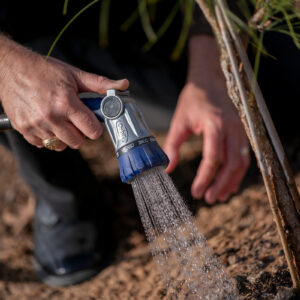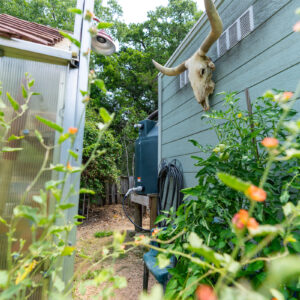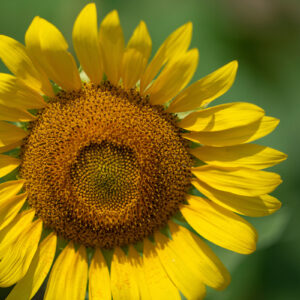Oligonychus pratensis (Banks)
Description and Biology
Spider mites, especially Banks grass mite and less frequently twospotted spider mite, Tetranychus urticae Koch, infest sorghum and many species of grasses. Spider mites are more common on sorghum grown in arid areas. Female spider mites, with a body length of 0.40 to 0.45 mm, are larger than males. After feeding, both sexes usually become green, with the exception of the palpi and first two pairs of legs that remain light salmon colored (Color Plate 10). Two dark spots, comprised of food contents, show through the transparent body wall. Eggs (about fifty per female) are laid in webbing on the underside of leaves. Eggs are pearly white, spherical, and one-fourth the size of the female. Eggs hatch in three to four days. Six-legged nymphs are light green; older eight-legged nymphs are darker green. The life cycle under good conditions requires about eleven days.
Symptoms & Damage
Spider mites suck juices from the underside of sorghum leaves, beginning along the midrib of lower leaves. Infested areas of leaves are pale yellow on the top surface and later become reddish. Leaves may die. Spider mites when abundant spread up the plant. The underside of infested leaves has a deposit of fine webbing spun by the spider mites. Spider mites when abundant may invade and web sorghum panicles. Increase in spider mite abundance usually occurs after sorghum panicles emerge. Large numbers of spider mites before the hard-dough stage reduce the ability of sorghum plants to make and fill kernels. However, yield loss may occur after the hard-dough stage if spider mites are abundant enough to cause lodging and related harvest losses.
Monitoring
Spider mites infesting sorghum are extremely small. The underside of lower leaves should be inspected carefully. Spider mites occur in colonies, first along the midrib of leaves, but later spread away from the midrib and up the plant to higher leaves. Webbing is evidence of the presence of spider mites. It is common for spider mite infestations to begin along field borders, but an infestation quickly will spread throughout a field.
Hot and dry weather usually favors rapid increase in spider mite abundance. Also, spider mites in sorghum often respond as induced (secondary) pests following insecticide application for key insect pests such as greenbug. Rapid increase in spider mite abundance following insecticide application is thought to be caused by tolerance to some insecticides, destruction of beneficial insects and mites, and dispersal of spider mites from colonies.
Management
Control of spider mites by natural enemies is not always effective. Because spider mites increase more rapidly on moisture-stressed plants, irrigation, where available, should be applied to prevent plant stress. Spider mites may move from small grains, especially wheat, to sorghum. Not planting sorghum next to wheat avoids direct infestation by spider mites. Insecticide is justified when one-third of the leaves of most sorghum plants in a field are infested with mites. Thorough coverage with the spray mixture is required. At least 28 to 47 liters of spray mixture should be applied per hectare. Insecticides may not provide effective control because spider mites often are resistant. Every effort should be made to control spider mites with the first insecticide application, because subsequent applications usually are ineffective.




